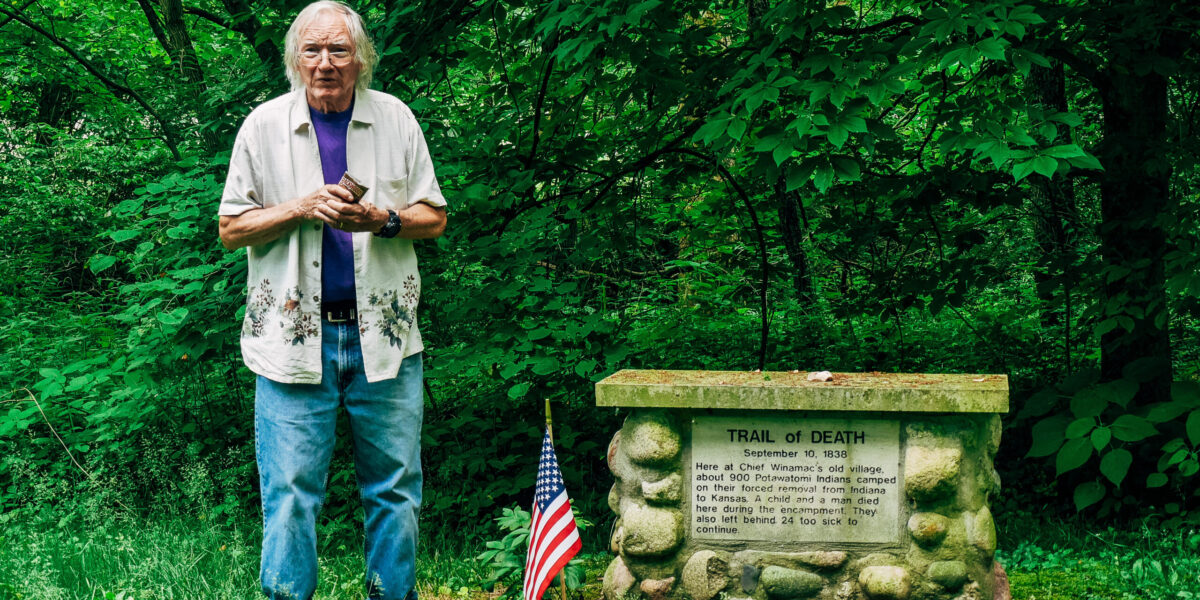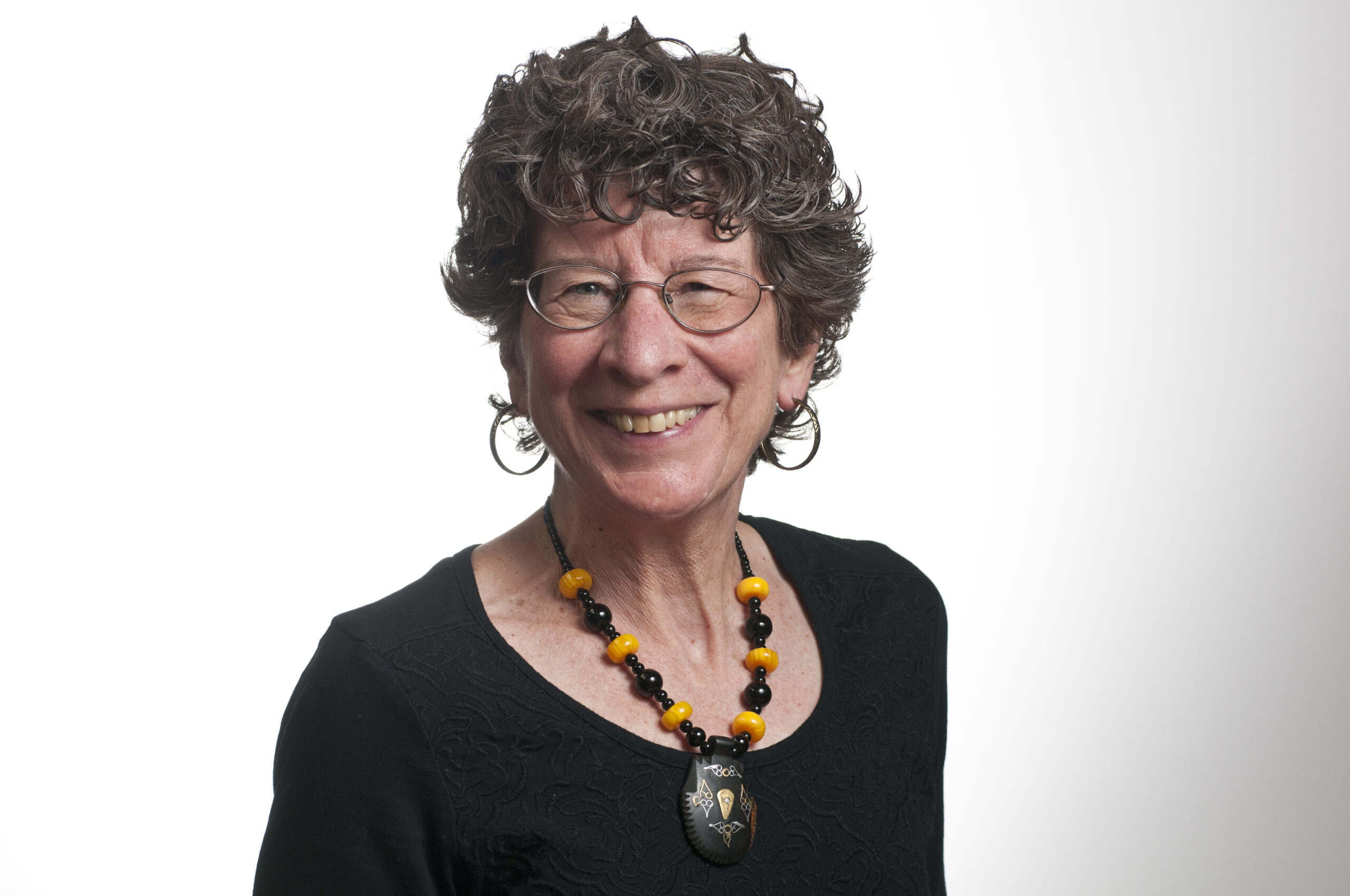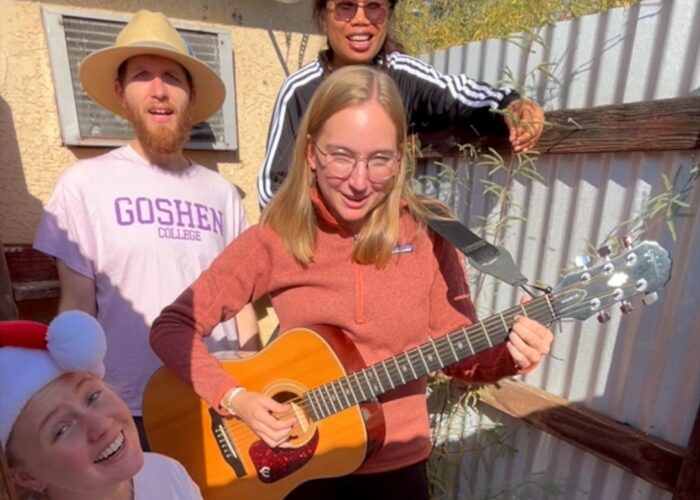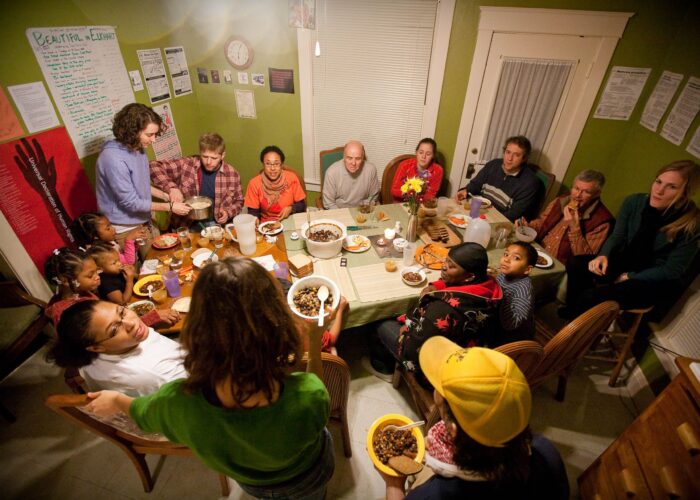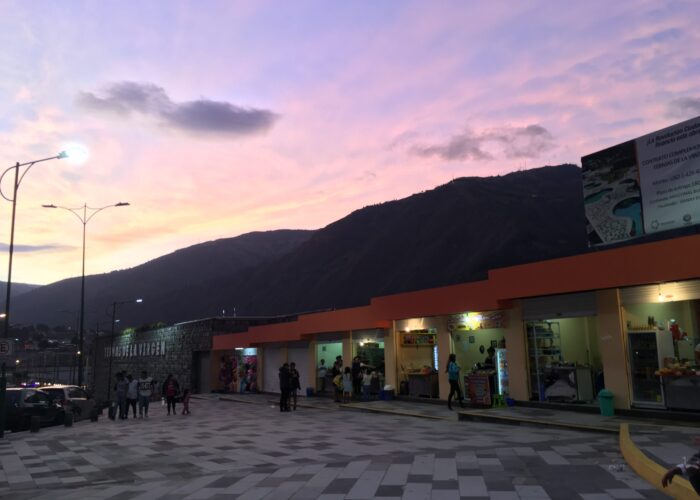The 2019 Trail of Death Pilgrimage of Remembrance, Lament, and Transformation helped seminary students and other participants remember the atrocities done "in the name of Christ" and seek transformation through conversations with Potawatomi neighbors.
ELKHART, Indiana (Anabaptist Mennonite Biblical Seminary/Mennonite Mission Network) – On Pentecost Sunday, God’s words in the Potawatomi language, "I will pour out my Spirit upon all flesh, and your sons and daughters will prophesy…" anointed the day’s journey for 19 Trail of Death pilgrimage participants as they broke camp at Mark Twain State Park in Monroe County, Missouri. George Godfrey, Ph.D., a Potawatomi elder and co-leader of an 11-day pilgrimage that retraced the 1838 forced removal of more than 850 Potawatomi people, read from Acts 2 as part of the morning worship.
"It is appropriate that the Trail of Death pilgrimage occurs during Pentecost. The Trail of Death was an anti-Pentecost event that suppressed God-given languages, culture, and life; yet Potawatomi people survived. Our hope is that through this pilgrimage of lament and remembrance, we will be witnesses to God’s grace and power flowing in healing ways," said Katerina Friesen, M.Div., a sessional faculty member and co-leader of the June 3-13 Anabaptist Mennonite Biblical Seminary (AMBS) course with Godfrey and Rich Meyer
Two days of orientation focused on learning about the Doctrine of Discovery, a nearly 600-year-old legal framework in which church leaders and politicians have used theology to justify the theft of land belonging to Indigenous people.
Participants in this year’s Trail of Death pilgrimage came from states as wide ranging as Arizona and Georgia; six of them were AMBS students. Ages spanned 50 years. By the end of the pilgrimage, these different individuals had become a caring community through sharing space in vehicles, walking together, eating together, crying together, praying together and dreaming of a future where God’s justice and love help people live in unity and peace.
The government of the United States signed more than 40 treaties with Potawatomi nations in the 1830s – and either broke or changed each of them. According to the Potawatomi Trail of Death website, in 1836, Menominee, a leader of a group of Potawatomi people living near present-day Plymouth, Indiana, dared to stand up to the government’s lies and refused to sign a treaty that would trade the land on which his people lived for territory west of the Mississippi River.
Then-Indiana Governor David Wallace took revenge and authorized General John Tipton to forcibly remove Menominee’s people. Tipton disguised the human round-up as a friendly invitation to a church meeting on August 30, 1838. A militia composed of White settlers surrounded the church and put Menominee and two other leaders in jail cells atop wagons, knowing the people would not abandon their leaders. Five days later, the agonizing westward trek started, moving at a 17-mile-a-day average pace despite the presence of elderly folks, pregnant women and small children. Food was inadequate, and sometimes there was only a trickle of cholera-infested water to drink.
This year’s Trail of Death pilgrimage participants read relevant portions of the government reporter’s journal as they traveled from one stone marker to the next, indicating where the Potawatomi captives had camped each night. Entries frequently ended with variations on the refrain: "a child died today."
According to the Potawatomi Trail of Death website, by the time the Potawatomi captives reached their destination near present-day Osawatomie, Kansas, on November 10, 1838, 41 people had died. But the deaths didn’t end with the arrival. The government agent responsible for the distribution of land, houses, and cattle – a promise dangled to keep the procession moving forward – had disappeared a few days before. This was a flight for his life, as there was nothing on the "Promised Land" except some rock formations. All the familiar resources that were part of Potawatomi civilization in the Great Lakes region did not exist on the prairie – no wood with which to build their wigwams, no wild rice that was their staple food, and none of the medicinal plants they used to cure diseases. Approximately 150 Potawatomi died from starvation and exposure during their first winter in Kansas. Today, crosses stand at that site with more than 600 names of those who died in the first decade.
This year’s Trail of Death pilgrims, most of whom have White settler ancestors and through these ancestors have benefitted from atrocities enacted by the U.S. government, were moved to lament and confess the sins of the past that continue to influence their lives. Their experience of following in the footsteps of those removed from their land in 1838 sparked conversations about reparations and further relationship-building with Potawatomi communities today.
Participants were awed by what Friesen identified as the "adaptive resilience" of the Potawatomi nations. A visit to the government offices of the Pokagon Band of Potawatomi near Dowagiac, Michigan, demonstrated how one of the nine Potawatomi nations is flourishing despite living with the devastating consequences of violence and injustice. There is a renaissance of Potawatomi language, including cellphone apps with dictionaries and grammar; celebrations of dance, music groups, and regalia; and a state-of-the-art cultural center in Shawnee, Oklahoma.
Eddie Joe Mitchell and his wife, Mary, welcomed the Trail of Death pilgrimage participants to St. Philippine Duchesne Memorial Park in Linn County, Kansas, where stark crosses bear testimony to the deaths of hundreds of their ancestors. Mary cooked a much-appreciated meal of sacred Potawatomi food, all grown and gathered by her family: dried corn with buffalo meat and milkweed with bacon, just to name a few of the dishes. The Mitchells are teaching their children about food sovereignty and traditional ways of healing. Eddie Joe also shares his wisdom through a blog.
The Trail of Death: A Pilgrimage of Remembrance, Lament and Transformation is a biennial course of Anabaptist Mennonite Biblical Seminary; this year’s pilgrimage was also co-sponsored by Mennonite Central Committee Great Lakes. Because of Mission Network’s commitment to undoing racism in all its forms, the agency sent a representative on the past two pilgrimages. See Cynthia Friesen Coyle’s article from 2017. See also ambs.edu/trailofdeath.

